Potrebujeme váš súhlas na využitie jednotlivých dát, aby sa vám okrem iného mohli ukazovať informácie týkajúce sa vašich záujmov. Súhlas udelíte kliknutím na tlačidlo „OK“.
ASTM D4818-89(2012)
Standard Classification for Rubber Compounding Materials—Vulcanization Accelerators
Automaticky preložený názov:
Štandardná klasifikácia gumárenských zlučovanie materiály & ndash; urýchľovače vulkanizácie
NORMA vydaná dňa 1.5.2012
Informácie o norme:
Označenie normy: ASTM D4818-89(2012)
Poznámka: NEPLATNÁ
Dátum vydania normy: 1.5.2012
Kód tovaru: NS-28745
Počet strán: 4
Približná hmotnosť: 12 g (0.03 libier)
Krajina: Americká technická norma
Kategória: Technické normy ASTM
Kategórie - podobné normy:
Anotácia textu normy ASTM D4818-89(2012) :
Keywords:
ICS Number Code 83.040.20 (Rubber compounding ingredients)
Doplňujúce informácie
| Significance and Use | ||||||||
|
Class 1, Sulfenamides: As a group, the 2-benzothiazyl sulfenamides are the principle sulfur vulcanization accelerators used in the rubber industry today. The role of these materials in vulcanization is dual. They provide scorch time (delay period) in the crosslinking or vulcanization operation at processing temperatures. The delay avoids premature crosslinking during the processing, for example, mixing, extrusion, etc. Once the mixed rubber is at the curing temperature, these materials promote a rapid rate of curing (crosslinking, vulcanization). The presence of certain impurities in this class of materials can affect their performance characteristics. The 2-benzothiazyl sulfenamides are subject to degradation on extended storage. Significance degradation can affect their performance characteristics. In particular, the quality of the material is a function of storage time, temperature, relative humidity, and the impurity profile of the material; for example, free amines, salts of 2-mercaptobenzothiazole, etc. Since sulfenamide degradation in storage is an autocatalytic process (degradation products accelerate further degradation), significant degradation may only occur after a long induction period. Class 2, Thiazoles—Thiazole derivatives are versatile vulcanization accelerators that are widely used in the rubber industry either alone or in combination with other accelerators. Class 3, Guanidines—The guanidines have little importance as primary vulcanization accelerators, except for thick-sectioned goods, because of a typically slow vulcanization rate. As secondary accelerators they are used with other accelerators of the thiazole class. These resulting combinations vulcanize faster and give higher levels of vulcanization than do their individual constituents when used separately. The thiazole-guanidine combinations are frequently used for technical rubber goods. Class 4, Dithiocarbamates—Vulcanization with dithiocarbamates is faster than with thiurams. Dithiocarbamates are used as ultra accelerators with normal sulfur levels. They are also employed as secondaries or activators for other accelerators. Class 5, Thiurams (disulfides)—Thiuram disulfide accelerators are used for vulcanization without elemental sulfur to produce rubber compounds that show essentially no reversion and that have low compression set and good aging characteristics. For low sulfur vulcanization, thiurams are normally used in combination with sulfenamides. With a normal amount of sulfur, thiurams act as ultra accelerators. Class 6, Thiurams (other than disulfides)—This class contains other thiuram types that are not disulfides. They are used as ultra accelerators with normal amounts of sulfur. Di, tetra, and hexasulfides can be employed without sulfur or with low sulfur levels to obtain rubber compounds with much reduced reversion tendencies. The chemical or physical characteristics, or both, of these materials may affect their use as vulcanization accelerators. |
||||||||
| 1. Scope | ||||||||
|
1.1 This classification covers vulcanization accelerators and defines their important chemical and physical characteristics. The properties outlined herein are useful for quality control; they can frequently be directly or indirectly related to the performance characteristics in rubber compounds. 1.2 Test Methods D1519, D4571, D4572 and D4574, for measurement of these properties, are not yet adapted for the vulcanization accelerators. Draft methods are being developed and will be submitted through Subcommittee D11.11 for processing and approval. A discussion of the reasons for determining these properties is contained in Section 6. |
||||||||
| 2. Referenced Documents | ||||||||
|
Podobné normy:
Historická
15.2.2010
Historická
1.5.2012
Historická
1.5.2012
Historická
1.5.2011
Historická
1.5.2012
Historická
1.5.2012
Odporúčame:
Aktualizácia zákonov
Chcete mať istotu o platnosti využívaných predpisov?
Ponúkame Vám riešenie, aby ste mohli používať stále platné (aktuálne) legislatívne predpisy
Chcete vedieť viac informácií ? Pozrite sa na túto stránku.


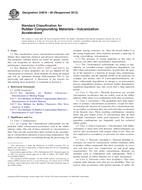
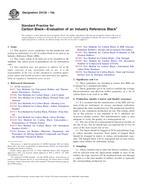 ASTM D4122-10a
ASTM D4122-10a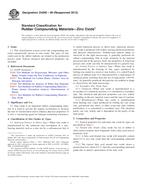 ASTM D4295-89(2012)..
ASTM D4295-89(2012)..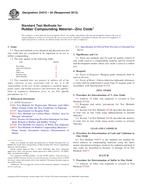 ASTM D4315-94(2012)..
ASTM D4315-94(2012)..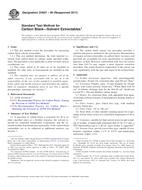 ASTM D4527-99(2011)..
ASTM D4527-99(2011)..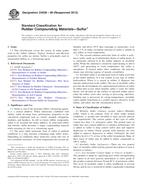 ASTM D4528-88(2012)..
ASTM D4528-88(2012)..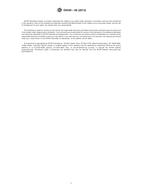 ASTM D4569-06(2012)..
ASTM D4569-06(2012)..
 Cookies
Cookies
